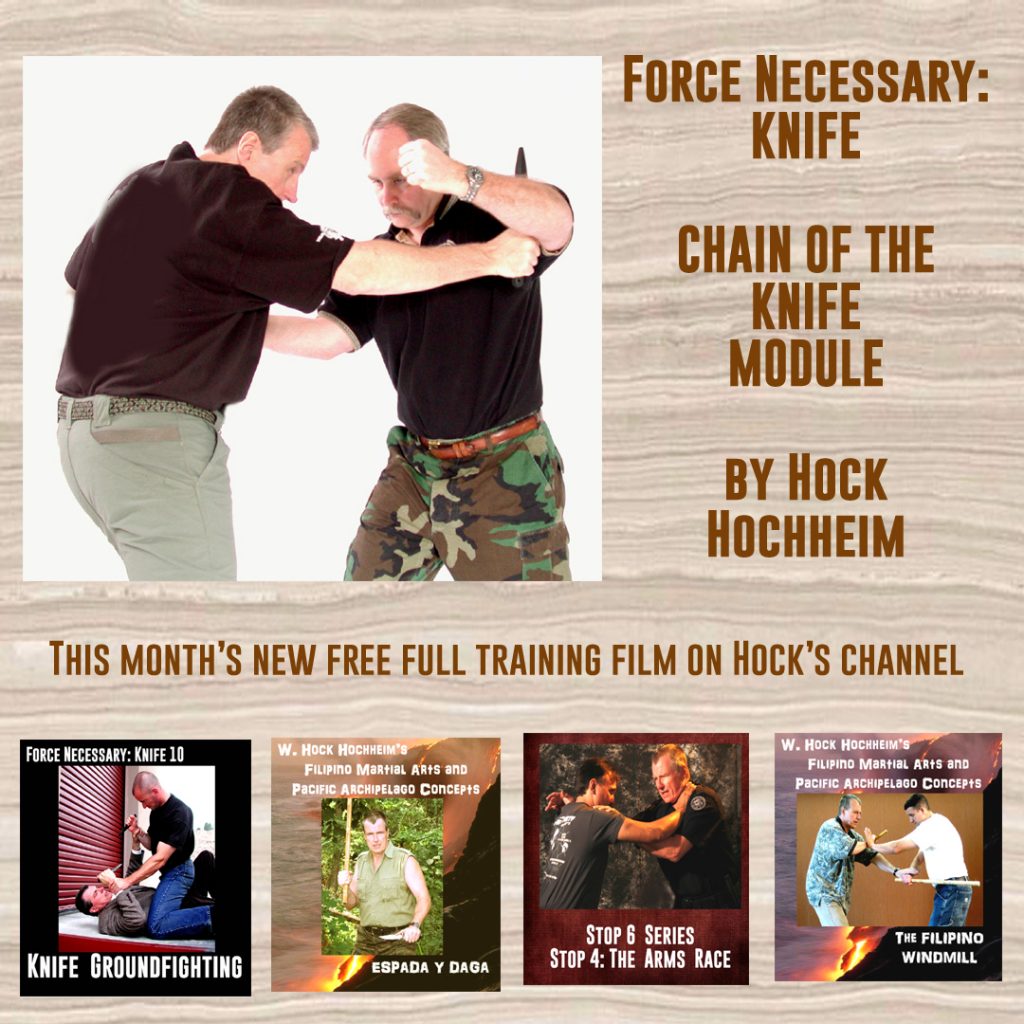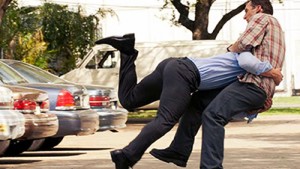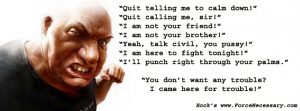What Is Your Perception, Your
Preconceived Idea of Your First or
Next Fight? (Or, How we learned to wrestle with our
preconceived notions about fighting.)
(This is by far one of the most important essays about fight-survival training I have ever written. What exactly are you training for? Arts? Crime? War?)
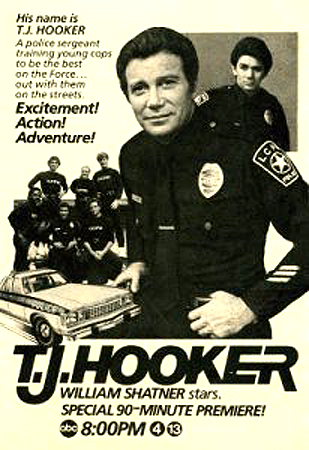 Perceptions. I recently watched the very first episodes of the 1980’s T.J. Hooker cop show, just for sheer nostalgia. I was already a street cop and detective when it was on prime time TV decades ago. On patrol in a giant squad car prowling residential streets, Hooker and his rookie partner drove through a Los Angeles neighborhood and Hooker lectures the rookie about the shame and horror of how people cowered and hid in their houses, fearing the crime on the L.A. streets. That was 1981! “They” were already scaring the bejesus out of you back then. Of course that was dramatic for a TV pilot, but these fear ideas fed and still feeds people today. Perceptions.
Perceptions. I recently watched the very first episodes of the 1980’s T.J. Hooker cop show, just for sheer nostalgia. I was already a street cop and detective when it was on prime time TV decades ago. On patrol in a giant squad car prowling residential streets, Hooker and his rookie partner drove through a Los Angeles neighborhood and Hooker lectures the rookie about the shame and horror of how people cowered and hid in their houses, fearing the crime on the L.A. streets. That was 1981! “They” were already scaring the bejesus out of you back then. Of course that was dramatic for a TV pilot, but these fear ideas fed and still feeds people today. Perceptions.
Defining perceptions. I am an old police detective from a time when Community Oriented Policing (C.O.P.) was going to save the world (and cure cancer?). One of the main points of said movement was that the “perception of crime” was just as real to citizens as the real crime data was. Look at how the murder rates in small parts of Chicago, Baltimore, Oakland, Memphis or St. Louis effect the opinions of outsider people on those cities, states and the country. People from elsewhere consider these entire cities as crime hellholes when they are not when you look at the big pictures of their population. In other countries, those tiny jurisdictions effect the opinion of the USA, as well as have their own myopic location problems.
Usually the perception of crime was/is always way higher than the real McCoy. So, with C.O.P. then, the police not only had to fight real crime, but had to have an advertising and public relations campaign against the perception of crime. Fake crime. I then sarcastically nicknamed our police agency the “Happy Machine” because we had to also make people… “happy.” One night I appeared a few seconds late to a squad meeting and said for the first time, “another day at the happy machine.” There was an uproar of laughter. It least that made them happy?
Big picture, fact was and is most people in the USA and many other civilized countries will never be victims of crime. (But needless to say, still, people should not ignore crime, have some realistic, healthy fears and perceptions of crime problems.)
What do they perceive? They imagine what? A home invader? Rapist? Mugger? Mass shooter. Crazy guy? Serial killer? Kidnapping? Bar fight? Road Rage? A sword fight? A 28 inch stick fight? A chess-like wrestling match on the tile floor? Etc. Some even have an imaginary perception of how they will fight the fight. Gun? Knife? MMA? WWII? Kill? Maim? Contain? Negotiate? Pray? Etc. It certainly would help if their perceptions were as accurate as possible. Are yours?
Perception, as defined – “a way of regarding, trying to understand, or interpreting something; a mental impression.”
Mental impressions and being impressionable. Perceptions. How deep was that paranoid perception of criminals? Has that perception changed? Aside from the headline breaking “alert” news alerts, many perceptions about fighting against bad guys are subliminally shaped by books, movies, TV and even personal fantasy projections.
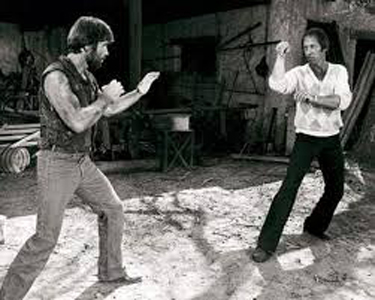 Same with fights. Remember back when Chuck Norris or Claude Van Damme would kick a bad guy down? The bad guy would crash and the Chucks and the Claudes would just stand there, in a poster-boy, fighting pose, maybe bouncing up and down, waiting for the serial killer or hit-man to stand back up and continue the classic fight. Art imitates life and life mimics art. How many people actually, waited for bad guys to stand back up up? That was the “movie fight” until Steven Seagal came along and started breaking arms. How many crimes involve two guys standing in fighting stances like in a boxing ring?
Same with fights. Remember back when Chuck Norris or Claude Van Damme would kick a bad guy down? The bad guy would crash and the Chucks and the Claudes would just stand there, in a poster-boy, fighting pose, maybe bouncing up and down, waiting for the serial killer or hit-man to stand back up and continue the classic fight. Art imitates life and life mimics art. How many people actually, waited for bad guys to stand back up up? That was the “movie fight” until Steven Seagal came along and started breaking arms. How many crimes involve two guys standing in fighting stances like in a boxing ring?
Soem fights might start off in with standoff posing and what we use to call in the Army “profiling,” – making a scene of some sort. Taking of a watch. Taking off a shirt and spreading out their back in an animalistic way. And within some streetfights, there’s a breakaway and some virtually boxing or kick boxing posing. I say some. Therefore a survival fighter must know some related tricks in this situation.
Must it be arts and sports? We had a champion black belt in our old, classical karate school I attended decades ago, who got into a fight….in a bar…and lost. He came to class and told the school owner, “I was in a fight last night and it wasn’t anything like I thought it would be.”
If you are in a non-sport class, such as a combatives class your student should return to you from a bar fight you and say, “I was in a fight last night and it was just like you told me.” Proper perception.
Perception is the running guts of training though isn’t it? We martial folks, civilians, police and military train for the perception of what we think our “fight” will be like. If you are sport fighting, you know exactly who, what, where, when, how and why about your scheduled fight. You have a darn good perception of the “Ws.” Even if you are a soldier, you have some good perceptions about what might happen to you and your unit, all from a gathered mission intelligence and assignment history. (This is why God made sergeants.)
You know the Octagon fight will happen and you’ve seen enough of them on TV to plan ahead. And you are pretty sure trouble is ahead in a war zone, but what about sporadic criminals versus citizen encounters? That may never happen…
“What are YOUR preconceived notions about fighting?
Your first fight? Your next fight? What is your school’s, your instructor’s perception. of your next fight? Is it right or wrong?” – Hock
I use to complain that so many of these modern fighting systems of recent times inadvertently train for a fight just in “the bar,” (how many training videos were actually shot in a bar? Stay out of these bars!) or on the sidewalk or parking lot right outside the bar? That cursed dark alleyway out back of the bar? Roadhouse movie world? Bars. Bars. Bars. Young guys teaching other young guys how to fight in bars and they just automatically assume/gravitate to that barroom setting. Meanwhile a soldier in Syria has another location in mind. How about the rapist?
Many if not most martial arts are one dimensional (more on that in another essay in this book). People perceive their next hand, stick, knife gun fight, will be based on what they do inside the classes they are taking. Another problem is the “novice” fighter. Or as I like to call him, the stupid fighter. By the way there is a statistical chance that will probably be your first or next “opponent” – the untrained, stupid one. You have been working so hard to fight the trained fighter who really is just the mirror image of you, doing the same things you do, countering the same ways you do, the other guy/gal in your school/system. You are learning to defeat things within your system. Then idiot boy walks up, spits in your eye and hits you with a chair.
There’s that classic Mark Twain observation that that the expert sword fighter fears the novice more than the other expert. Because, he knows not what the novice will do!
“The best swordsman in the world doesn’t need to
fear the second best swordsman in the world;
no, the person for him to be afraid of is some
ignorant antagonist who has never had a sword
in his hand before; he doesn’t do the thing he
ought to do, and so the expert isn’t prepared for
him; he does the thing he ought not to do; and
often it catches the expert out and ends him
on the spot.” – Mark Twain
Another perspective on this is, who, where, where, when, how and why does your instructor think your first of next fight will be? They picture it and teach you. And they quite well could be wrong.
And real people seem to be fighting a whole lot, huh? Somewhere on the planet. Earth is a big place. Police and the military are at 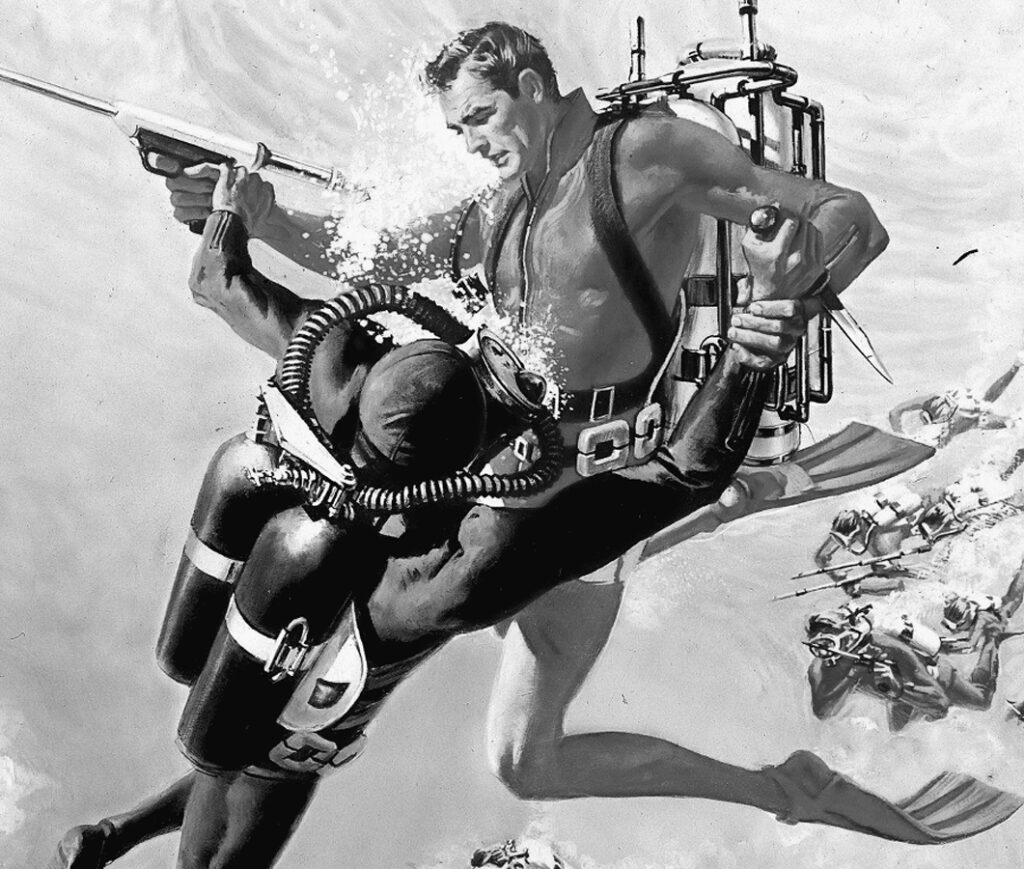 least aware they could be fighting absolutely anyway, anywhere in this hand, stick, knife, gun world. Inside or outside houses and business, on tile floor, rugs, cement, dirt, grass, mud, tar. I have never fought anybody underwater, though. HA! Should I train for that too? (Though I know of some cops fighting people on the ankle-deep and waist deep fringes of oceans and lakes.)
least aware they could be fighting absolutely anyway, anywhere in this hand, stick, knife, gun world. Inside or outside houses and business, on tile floor, rugs, cement, dirt, grass, mud, tar. I have never fought anybody underwater, though. HA! Should I train for that too? (Though I know of some cops fighting people on the ankle-deep and waist deep fringes of oceans and lakes.)
I think I’ve had to struggle, and-or fight, arrest most people on parking lots, streets and inside houses full of furniture more than other locales. And kick boxing and wrestling didn’t completely help me out. One time a crazy guy and I slid down a long, thick, muddy hill, in heavy rain, duking it out, outside a hospital. Almost upside-down. In the real world, you really can fight in weird places in weird positions, in weird circumstances. Oh, and no mats. People on the planet Earth will fight in rural, urban, suburban areas, inside and outside of buildings at any time of day and regardless of the weather.
It’s nice to do these big picture comparisons of populations versus crime victims, and maybe breathe some sigh of relief, but that doesn’t mean we shouldn’t prepare and be complacent. And when we prepare, we perceive. You are still left with these guesses, your perceptions and mental impressions of your future fight. We now watch crazy, reality, video clips on youtube and perhaps they do help the real perception of the wacky chaos that will most likely occur in a fight, and not leave us with some Chuck Norris, karate fight scene in our minds.
One and two dimensional martial artists will always argue that what they do can extrapolate over to reality. Well, how much extrapolation is involved? This leads us to the another vital topic of training survival- reduce the abstract. You define the reality and the abstract via these Ws and H questions.
Learn and exercise some basic, generic things which we hope you can apply under many circumstances, come what may.
Come, what may. We learn the “come what may” via collecting good intelligence info on crime and war where you are and where you are going. So, we train to fight the fight we perceive and who, what, where, when, how and why we perceive it will happen.
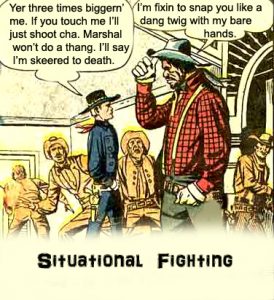 I worry about the “who, what, where, when, how and why” questions. In my courses and should be in your courses too, part of the “Who Question is “who do we fight?” Well, we fight three “enemies.”
I worry about the “who, what, where, when, how and why” questions. In my courses and should be in your courses too, part of the “Who Question is “who do we fight?” Well, we fight three “enemies.” 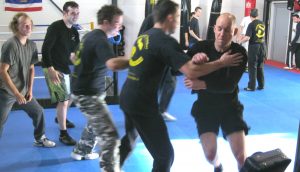


 Perceptions. I recently watched the very first episodes of the 1980’s T.J. Hooker cop show, just for sheer nostalgia. I was already a street cop and detective when it was on prime time TV decades ago. On patrol in a giant squad car prowling residential streets, Hooker and his rookie partner drove through a Los Angeles neighborhood and Hooker lectures the rookie about the shame and horror of how people cowered and hid in their houses, fearing the crime on the L.A. streets. That was 1981! “They” were already scaring the bejesus out of you back then. Of course that was dramatic for a TV pilot, but these fear ideas fed and still feeds people today. Perceptions.
Perceptions. I recently watched the very first episodes of the 1980’s T.J. Hooker cop show, just for sheer nostalgia. I was already a street cop and detective when it was on prime time TV decades ago. On patrol in a giant squad car prowling residential streets, Hooker and his rookie partner drove through a Los Angeles neighborhood and Hooker lectures the rookie about the shame and horror of how people cowered and hid in their houses, fearing the crime on the L.A. streets. That was 1981! “They” were already scaring the bejesus out of you back then. Of course that was dramatic for a TV pilot, but these fear ideas fed and still feeds people today. Perceptions.  Same with fights. Remember back when Chuck Norris or Claude Van Damme would kick a bad guy down? The bad guy would crash and the Chucks and the Claudes would just stand there, in a poster-boy, fighting pose, maybe bouncing up and down, waiting for the serial killer or hit-man to stand back up and continue the classic fight. Art imitates life and life mimics art. How many people actually, waited for bad guys to stand back up up? That was the “movie fight” until Steven Seagal came along and started breaking arms. How many crimes involve two guys standing in fighting stances like in a boxing ring?
Same with fights. Remember back when Chuck Norris or Claude Van Damme would kick a bad guy down? The bad guy would crash and the Chucks and the Claudes would just stand there, in a poster-boy, fighting pose, maybe bouncing up and down, waiting for the serial killer or hit-man to stand back up and continue the classic fight. Art imitates life and life mimics art. How many people actually, waited for bad guys to stand back up up? That was the “movie fight” until Steven Seagal came along and started breaking arms. How many crimes involve two guys standing in fighting stances like in a boxing ring?  least aware they could be fighting absolutely anyway, anywhere in this hand, stick, knife, gun world. Inside or outside houses and business, on tile floor, rugs, cement, dirt, grass, mud, tar. I have never fought anybody underwater, though. HA! Should I train for that too? (Though I know of some cops fighting people on the ankle-deep and waist deep fringes of oceans and lakes.)
least aware they could be fighting absolutely anyway, anywhere in this hand, stick, knife, gun world. Inside or outside houses and business, on tile floor, rugs, cement, dirt, grass, mud, tar. I have never fought anybody underwater, though. HA! Should I train for that too? (Though I know of some cops fighting people on the ankle-deep and waist deep fringes of oceans and lakes.)